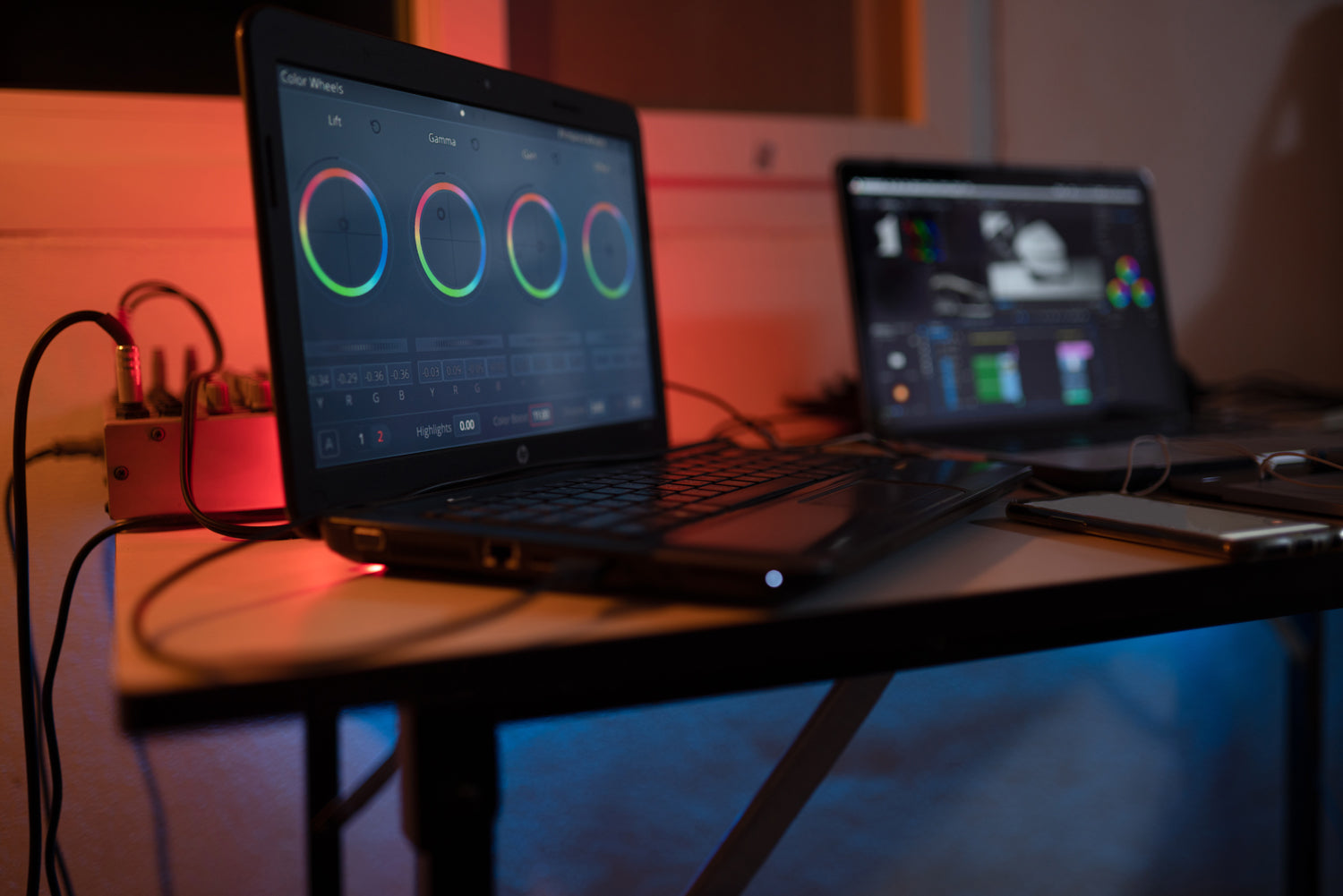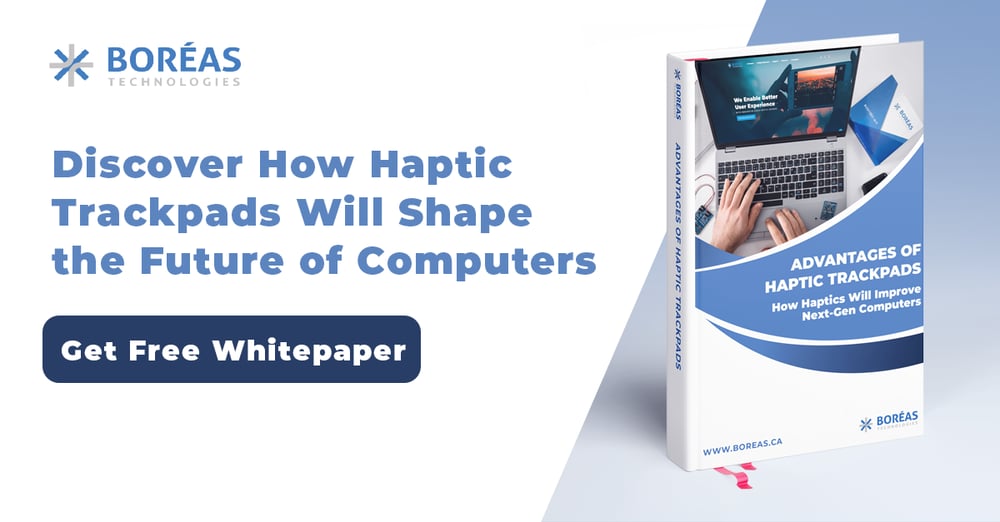
How much do you know about your computer's trackpad? Most likely, the answer is not much. There's a good reason for this, as laptop reviews often lack serious commentary on trackpad technology.
Unfortunately, laptop touchpads carry a bad reputation, and consumers tend to think traditional trackpads are inferior to external mice. This is true most of the time. The average laptop trackpad won't outperform the user experience of a quality external mouse. However, modern trackpad technology is changing for the better. Many premium laptop designs now have haptic touchpads that perform various functions accurately.
Below, we'll explain the intricacies of haptic technology and why laptop designs are flocking to incorporate piezo-powered actuators in their next generation of devices.
Why Trackpad Performance Matters in Current and Next-Gen Laptops

There's much to consider when measuring trackpad performance, but haptics often get forgotten by reviewers, and designers fail to prioritize them as a result. Many trackpad reviewers need help understanding the critical factors necessary to evaluate modern trackpads. As a result, readers usually won't find much informative advice concerning haptic performance. Ultimately, without proper reviews, it's difficult for users to understand the benefits of haptic technology.
Before understanding the technology behind haptic feedback, you must know its purpose. Therefore, anyone considering buying or manufacturing a laptop should familiarize themselves with haptics to acquaint themselves with next-gen device features.
Key Elements of Performance in a Haptic Trackpad
Haptic trackpads are a relatively new concept for most consumers and require careful evaluation to determine their performance. To assess the quality of haptic trackpads, it is essential to go through a checklist of performance metrics. In addition, comparing haptic trackpads side by side can help you differentiate between the quality of haptic trackpads, particularly in terms of the click feeling. As time passes, we may forget the click feeling, so this comparison is crucial to fully understand the differences between haptic trackpads.
Every company will try to tout its haptic feedback mechanism as the next, most incredible thing in touchpad technology. Thankfully, you can assess performance elements by analyzing the following four factors.
Uniformity of the Click

Haptic technology provides a physical sensation whenever a user performs a command. This sensation is also known as tactile feedback, and the intensity changes based on the applied pressure. This results in a heightened sense of touch that improves the user experience.
When determining the quality of a haptic trackpad, a user should apply the same pressure across multiple points of the trackpad. Testing the consistency is a great way to get an idea of the quality of the device and check for any dead spots. When checking uniformity, press the four corners of the trackpad at the same intensity to evaluate if there is any inconsistency.
Another factor to consider is the force required to generate a click. A well-calibrated haptic trackpad should require the same force to click across the entire surface. Inconsistent force could result in missed or accidental clicks, affecting the overall user experience. So, it's crucial to test the force needed to generate a click across the trackpad surface to ensure the uniformity of force required.
Sharpness of the Click
An exemplary haptic actuator provides a sharp, crisp click. Therefore, always feel for the response when testing out different trackpads. This factor is crucial because it likely signifies the method of haptic technology used in the device.
For example, LRA trackpads are an older, less effective form of generating haptic feedback. LRA types provide spongier and slower feedback. On the other hand, a piezoelectric-powered touchpad provides all the crispness you want.
You should test responses at various pressure levels to see how precise the feedback is in detecting different levels of force.
Latency in Response Time

Even if a haptic trackpad seemingly gives a sharp response, you should closely analyze its response speed. Tactile feedback should be snappy and realized immediately after applying pressure.
A latent response time is irritating. More importantly, it decreases accuracy, especially for high-intensity uses like video editing, graphic design, or gaming.
Thankfully, measuring latency is easy. To do this:
- Click and drag an icon or file across your home screen.
- Release the item.
- See if you can detect any window between when you click/drop and feel the feedback.
- If you can notice it, that indicates the response time is latent and this device uses an LRA actuator. A Piezo trackpad is fast enough to click on the release.
Clicks Per Second

The last element to evaluate is clicks per second. For many computing purposes, rapid clicking is essential.
To test for rapid click performance, log on to a website that measures clicks-per-second, like "Click Test." Then, use the site's function to count the clicks and compare different models.
Remember that there are usually differences between the varying forms of haptic feedback tech. For example, LRA would have difficulty reaching four clicks per second compared to eight cps for a piezo trackpad.
How Piezo Haptic Technology Performs in Laptop Computers
As mentioned earlier, various technological methods can create haptic feedback. However, piezoelectric options lead all designs with regard to response clarity, speed, and sensitivity.
Piezoelectricity uses unique materials called piezo elements. These materials generate force when placed under pressure, such as being bent or shaken. They are highly sensitive, making them ideal solutions for haptic feedback devices.
Piezo actuators aren't just the best in tactile feedback; they also have many other benefits. For one, they have a simple and slim design with the best drivers, such as those offered by Boréas Technologies, commonly with a thickness of around 2.4 millimeters. This saves room for vital specs, like battery size.
Additionally, piezo-powered trackpads eliminate specific components of a mechanical trackpad, creating even more space and reducing overall laptop weight.
Experience the Boréas Piezo Haptic Trackpad First-Hand
Comparing the wide range of offerings is essential when choosing piezo-powered motors to incorporate into your trackpads. Although piezo-driven devices lead the market in performance, certain manufacturers are further along when it comes to capturing the power of this form of energy.
Boréas Technologies leads all competitors, offering piezo-trackpads that combine force sensor and driver components. As a result, their trackpads produce faster response times, consume less battery power, and save space. Visit Boréas Technologies to understand why their CES-nominated trackpads are the most cutting-edge solutions on the trackpad market.


Leave a comment